Gooseberry and currant hybrid: cultivation and use
Yoshta is one of the gooseberry and currant hybrids. It combines the benefits of both shrubs. It can grow in one place for more than 20 years.
Content:
Currant and gooseberry hybrids
Yoshta's progenitors, gooseberry and currant, have been known for a long time. They have always been popular. But gooseberry bushes are difficult to care for due to the large number of sharp thorns. In addition, it is often affected by various diseases and pests, which can lead to a complete loss of the crop. Therefore, breeders have long been looking for a way to cross it with currants, which they wanted to make more large-fruited, to ensure that it does not get sick with terry and is not damaged by a kidney mite.
But these plants are too different, so it was not possible to cross them for a long time. Finally, in the middle of the last century, the Swedish scientist Nicholson succeeded. He called it chrome. Soon the German R. Bauer received another hybrid, which he named Yoshta. The name consists of two syllables, one of the names of currants and gooseberries in German. His experience was then repeated many times, giving the hybrids different names.
But now the most common name is yoshta.
There is also an American Krondal hybrid. It has leaves similar to those of a gooseberry. Fruits are black, round, very tasty. All hybrids of these plants differ in the shape of the leaves, the taste and color of the berries, and even the shape of the bush.
Yoshta: description
The yoshta bush is tall, it can grow up to two meters. The bush can be up to 2.5 m wide. The branches are strong, there are no thorns on them. Leaves are shaped like leaves gooseberrybut larger. Smell currants it was not passed on to them. The cluster inflorescence consists of 3-5 flowers, similar to currant flowers, but slightly larger.
Fruits are about 2 times larger than currants, dark purple in color, oval in shape, with a smooth, firm skin.
They resemble cherry fruits in size. Weight of one 3-5 g. The taste of berries in the first half of summer is more like a gooseberry, with a currant flavor. In the second half of summer, the taste of currant is more pronounced. The fruits are sweet and sour. Ripen in the middle of summer, not all at once, in 3 weeks. The berries are firmly attached to the stalk and do not crumble.
Unfortunately, the yield of yoshta is less than that of the “parents”, currants and gooseberries. The hybrid is self-fertile. But some gardeners argue that in order to increase yields, you need to plant gooseberries and currants next to a bush. They will help improve pollination and, as a result, yield. There is no scientific confirmation of this fact. But they definitely will not be able to interfere, therefore such a neighborhood is always justified. The information that it is possible to collect 10 or even 15 kg of berries from a yoshta bush in a season looks clearly exaggerated.
Growing Yoshta
Yoshta can be propagated in any of the ways known for shrubs: cuttings, layering. You can even multiply seeds, but this is a very long and thankless process. Layers are dropped in the spring to a depth of 5 cm, and the next year, when roots appear on them, they are transplanted to a permanent place.
Shrub cuttings:
- Lignified cuttings are harvested in late February or early March, when they still have no leaves.
- They are planted in a mini-greenhouse or covered with glass jars.
- The soil should be loose and fertile.
- Most of the cutting is immersed in the ground, one or two of the upper buds are left outside.
- Mulch with peat so that moisture does not evaporate for as long as possible. The height of the mulch layer must be at least 4 cm.
It is better to immediately plant them in a shaded place so that they take root better. Then, when the root system is formed, they are transplanted to a permanent place. It is best to do this in late August or early September.
Yoshta seeds stratify in a refrigerator or cellar at a positive temperature close to zero. In the spring they are sown in the ground. If the seeds hatch in the middle of winter, they are sown in flower pots or plastic cups. In the spring, they are hardened and planted in open ground.
Young yoshta bushes are planted in a permanent place in early spring or early autumn.
When buying a bush, they carefully examine the root system. Trim the main roots lightly. The cut should be white and lively. If the roots are a little dried, you can put the bush in water for a day. Yoshta is not demanding on the soil, but it grows better on rich nutrient soils.
Landing rules:
- The place for planting yoshta is chosen sunny and open.
- The distance between the bushes should correspond to their size, about 2 m.
- Dig up the soil, preliminarily adding 300 g of lime, 100 g of superphosphate and potassium sulfate to each square meter.
- The pit is prepared in advance. When planted in spring, this is done in the fall. The depth and width of the pit is about 50 cm.
- The topsoil is laid out separately. The lower, less fertile, is mixed with fertilizers.
- They bring in rotted manure (a couple of buckets), wood ash (several glasses per bush). The soil is mixed with these substances, a third of the pit is covered. Then fill up to half of the pit with earth from the top layer. Leave until spring.
- If you bought a seedling unplanned, you need to dig it in the cellar, prepare a hole, let it settle for a couple of weeks. Then plant a yoshta bush.
For normal development and fruiting, it requires the introduction of potassium into the soil. The young bush is immersed so that the lower buds fall into the ground. Young shoots will subsequently grow from them. Sprinkle the roots with earth, water, mulch with peat or humus. Its amount under the bush should be up to 20 kg. If mulch is used, the soil around the bush should be loosened regularly.
Yoshta care
Care Tips:
- Water the yoshta bushes when the soil near the roots becomes dry. Use up to 3 buckets of warm water per square meter. They bring it in in the evening, pouring it into the grooves between the rows.
- Yoshta begins to bear fruit in the third or fourth year. The difference in yoshta care is that the bush almost does not need pruning... Yoshta branches and fruits live longer than currants. Excess branches are removed after fruiting. Some gardeners believe that yoshta is best grown as an ornamental plant. Therefore, you do not need to fertilize it.
- For those who grow it as a berry crop, you need to replenish the supply of nutrients. Introduce 5 kg of organic matter, 20 g of potassium sulfate, 40 g of superphosphate per 1 meter of area. Use mineral fertilizers, which are brought under the currants. Yoshta reacts well to feeding with a solution of fermented mullein in summer and wood ash in autumn.
Yoshta is not affected by diseases and pests. It is resistant to kidney mite infestation, powdery mildew, viral diseases. Therefore, you do not need to process it with protective equipment.
Using yoshta
Yoshta fruits contain a large amount of vitamin C. It is more than in gooseberries, but less than in currants. Therefore, its fruits are consumed fresh, harvested for the winter, dried. They help boost immunity. This is also facilitated by the presence of phytoncides in their composition. The berries are stored in the refrigerator for several days.When stored for a long time, they lose useful properties.
Useful properties of berries:
- Yoshta contains a large amount of trace elements. It speeds up metabolic processes. The low calorie content (45 kcal) allows the use of yoshta fruits for people who are losing weight.
- The iron found in yoshta berries helps to increase the level of hemoglobin in the blood. Vitamin P and anthocyanins strengthen the walls of blood vessels. This is also facilitated by the presence of potassium in fruits. It helps reduce the risk of heart attacks and strokes.
- Yoshta fruits normalize the work of the gastrointestinal tract, eliminate diarrhea. They contribute to the elimination of radionuclides and heavy metals from the body.
- People with high blood pressure are advised to consume yoshta berries along with honey. Homemade wine is made from yoshta berries.
But the fruits of yoshta also have contraindications. They should not be consumed in large quantities by patients with colitis and ulcers, a tendency to form blood clots and allergic reactions.
Yoshta bushes are planted in groups, creating hedges... In such cases, the distance between the bushes is about 40 cm. When grown in mixed borders, the distance is increased to 1 m. The yoshta bush looks original in the standard form. To do this, before planting, remove all branches except one, and all the buds on the trunk to a height of up to 40 cm. Such trees are cut, half-shortening their branches.
More information can be found in the video:



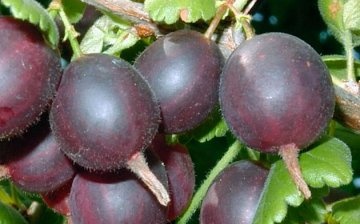
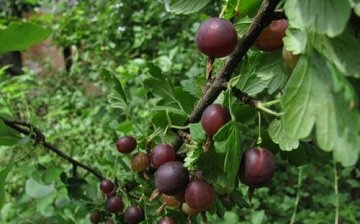
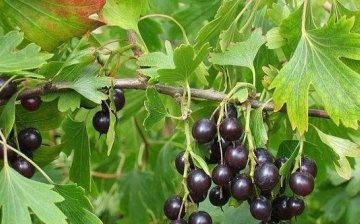

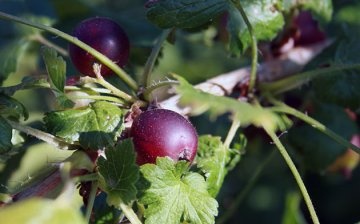
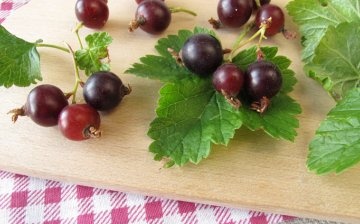






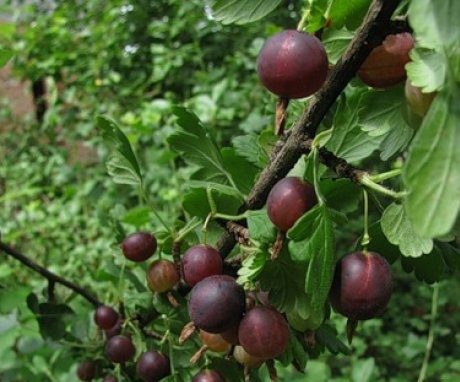
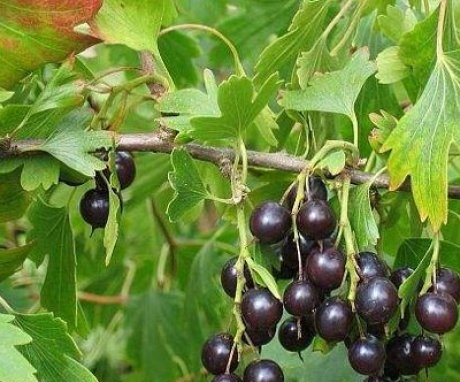
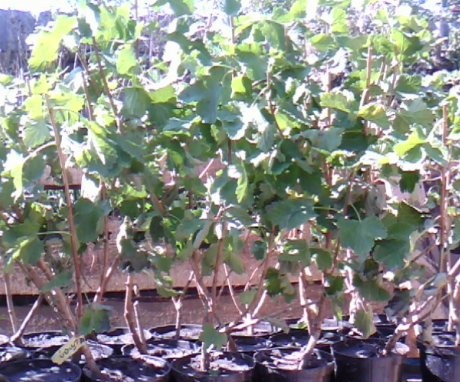
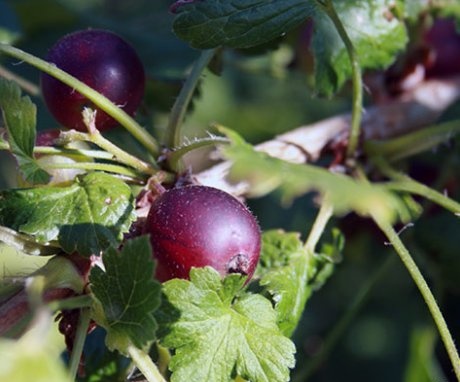

A very interesting plant, it looks more like a currant, but loves light, like a gooseberry. I tried yoshta several times, but on the site until I planted it. It is not clear how often you need to prune bushes, because old branches of currants are cut out quite often.
The advantage of this plant is the absence of thorns. Therefore, it is much easier to assemble it. But the taste of the fruit, in my opinion, is closer to the gooseberry, in a mature form they lack acidity.